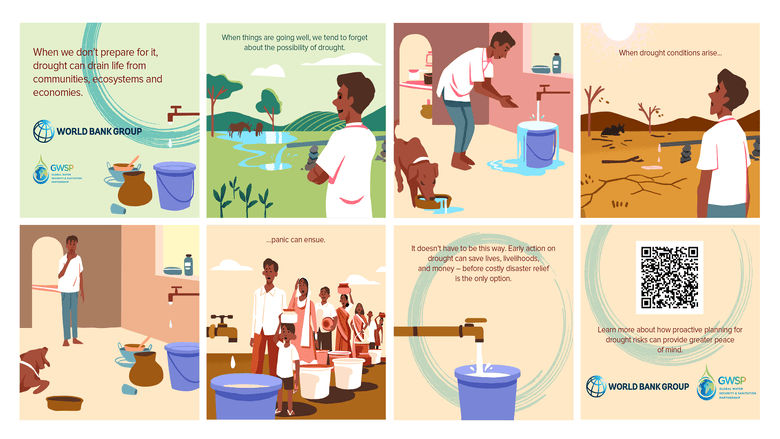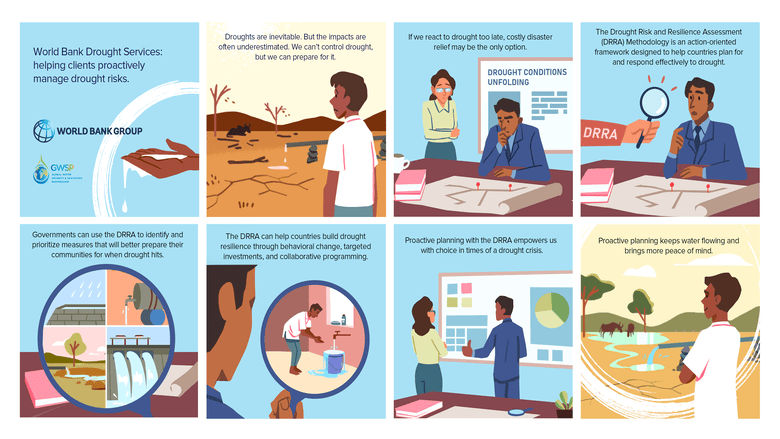Under a changing climate, droughts are becoming more frequent, severe, and widespread. In the last 50 years, extreme drought conditions have increased 233 percent, putting economies, livelihoods, and lives at risk. Cascading and compound drought impacts range from lack of potable water to reduced crop yields to lower educational outcomes. In developing countries, extreme droughts have double the impact on GDP growth compared to developed countries.
We cannot prevent drought, but we can prepare for it. As droughts are slow to develop and reveal their full impacts, action tends to be delayed until the only option is disaster relief. Once the drought passes, it is easy to become complacent until the next drought episode occurs, and the cycle of panic and crisis response begins again. The best way to avoid this cycle and the costly impacts of drought is to proactively address drought risks before they manifest. Preparation empowers us with more choice in times of crisis.
The World Bank’s Drought Risk and Resilience Assessment Methodology (DRRA) is a framework for action that can help governments proactively address drought risks. Drawing on international best practice in drought management, it outlines practical measures to build resilience at every stage of the drought cycle. With this tool, governments can create a community of stakeholders, target areas for action across sectors, optimize their resources and investments, and minimize future economic losses from drought.
Download Report I Executive Summary





